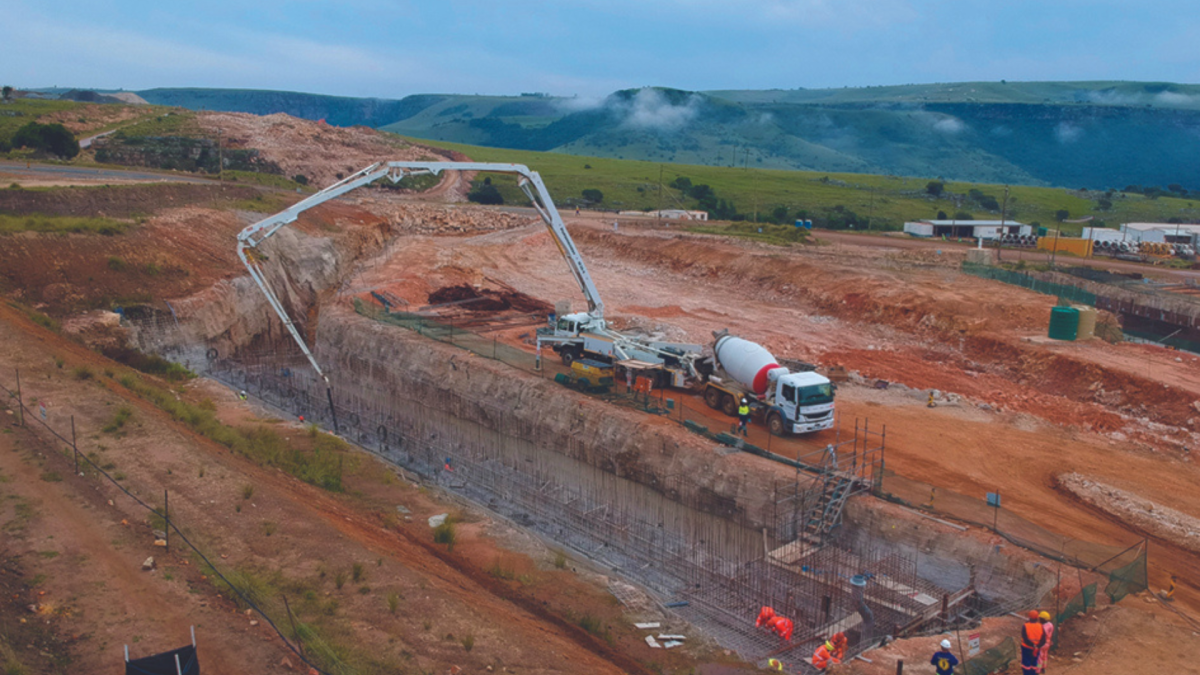
Supplied by PR
The four massive concrete blocks that anchor the Msikaba Bridge in the Eastern Cape are key components of the pace-setting project, which is being built by the Concor-Mota Engil Joint Venture (CME JV). These anchor blocks represent the engineering on which everything else rests.
The four massive concrete blocks that anchor the Msikaba Bridge in the Eastern Cape are key components of this iconic project, being built by the Concor-Mota Engil Joint Venture (CME JV).
According to Concor’s project director, Laurence Savage, the blocks represent the engineering on which everything else rests. “Since they are largely buried structures, they tend to be overshadowed by other, more dramatic, elements of the bridge, such as the 127 m high concrete pylons, but they are just as critical and their construction has been challenging in many aspects. The geology has been complex and each anchor block has faced its own unique demands, be it the location on site, geology, extent of rock fragmentation and water ingress .”
The Msikaba Bridge, which forms part of the South African National Roads Agency Limited’s (SANRAL) N2 Wild Coast project, will span the 198 m deep Msikaba River gorge and will help to drastically cut travel times for vehicles travelling between the Eastern Cape and KZN. It features a main span of 580 m which, on completion, will rank as the longest main span constructed by the cable-stay method in Africa.
The bridge is being built from the north and south banks of the gorge and comprises two identical ‘halves’, each spanning 290 m, which will meet mid-point over the gorge. Each half is supported by 17 pairs of cables attached to the inverted Y-shaped pylons, one on each side of the gorge. The pylons are back-stayed into the anchor blocks, two on either side of the gorge, by 34 pairs of cables – 17 for each half – which are positioned 130 m behind each pylon.
Each anchor block has a length of 49 m, a width of 10 m at the base (narrowing to 4 m on the spine of the structure), a depth of 17.2 m, and a mass of 21 500 tons. Their construction has been underway virtually since work on the Msikaba project began in earnest in late 2019. They will reach completion shortly, mere weeks before the deck is launched over the gorge.
Very precise blasting techniques were required for the bulk excavations for the four blocks with the blasted rock material being cleared out using 30 ton excavators and ADTs supplied by local sub-contractors. Extensive lateral support was installed in the side walls.
Construction of the blocks has involved the placing of 4 100 m3 of structural concrete and 2 650 m3 of mass concrete, as well as the fixing of 200 tons of reinforcement in each anchor block. Each block was cast incrementally with 11 lifts varying from 1.25 m to 1.75 m per lift.
Commenting on the difficulties faced during construction, Savage says these have included working in deep excavations and confined spaces, sometimes with heavy machines, and working in and over reinforcing, with much of the work taking place at night.
He also points out that a key principle of the project has been the use and involvement of the local community and various local business partners and sub-contractors. “This meant that many of our workers were untrained when we recruited them, as were a number of the sub-contractors. Today, these partners and sub-contractors are key contributors to the success of the project,” he says.
As a final comment, he notes that the Msikaba project passed the 3 million LTI-free man hours mark in October 2022. “This is an amazing achievement which is a credit to everyone on site, but especially to the teams on the anchor blocks who put in many of those 3 million hours,” he says.

